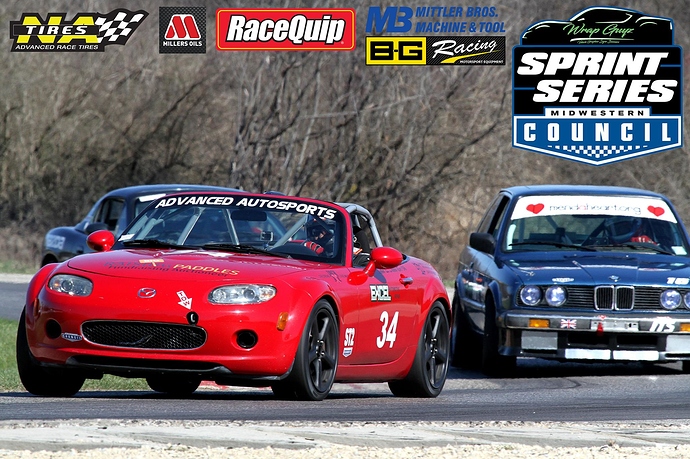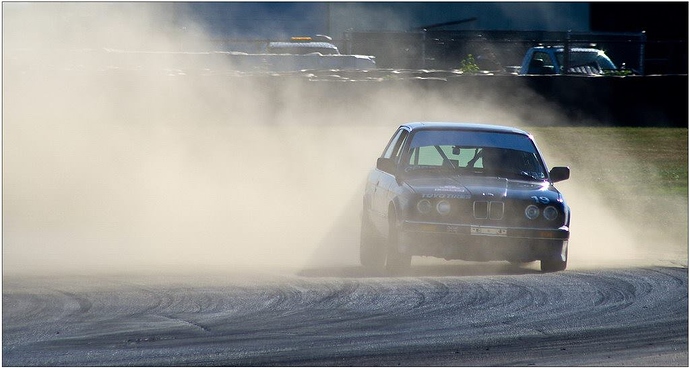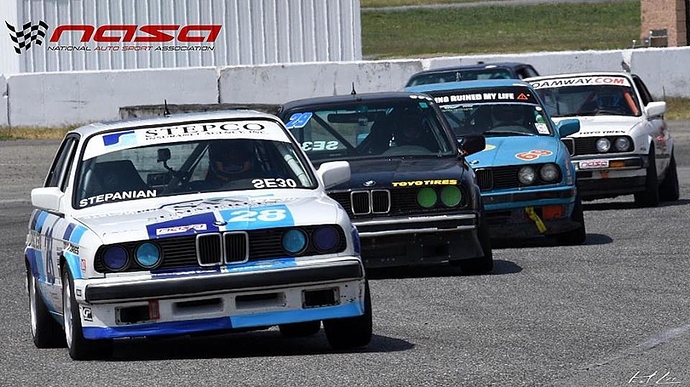My camber is 3.5 in front and about 3 in rear.
New springs cause oversteer for a few. Why?
You also have to consider that driving style could be an issue. I’ve codriven cars with other people before where one of us thought the car was pushy, and the other thought it was loose. Someone with quicker hand or foot movements is often more likely to get oversteer. Everyone is going to have to relearn to drive the car, but it’ll be a steeper learning curve for some people.
It’s interesting. It definitely is the harder of the 4 scenarios to get right. But a turn like that is a great indication of the “natural” balance is a car in terms of grip. If the front end is gripping more than the front your results would be manifested in the manner in which you describe. The fact that in “maintenance” throttle the car is neutral but adding throttle creates oversteer would indicate that your rear grip is actually quite badly out of whack.
OK I just saw your rear camber that you posted. I’m inclined to think you have too much rear camber. The rear bar near soft as you can get should stabilize the car. The rear bar would not involved in the equation at this point, it’s almost along for the ride. Not quite - but the emphasis should be on spring/shock and yeah - tire. If there was a bump and you hit that at the same time as the throttle, you’d get that effect, but as it was consistent lap-to-lap, then I’m looking squarely at the rear camber and suggesting a 2.2 negative would be my first step.
The fact that all this re-jigging is trying to accomplish ultimately is the maximum use of the tire.
Let’s talk about lowering the rear to improve handling. That’s interesting. One thing you need to do is ensure that you have a rake from back to front. I have about 1 inch of rake from rear to front. If I raise the front I raise the rear in kind.
Ultimately with the new springs I look for 3.1 to 3.4-ish negative camber in the front (does not need to be the same from side to side) and about 2.0 to 2.4 negative rear. Toe should be a touch in, in the rear, and a touch neutral or out in the front.
Ultimately you’d want the front end to be between 5 inches to as much as 6 inches high off the ground measured at the “lollypop” bushing mount. The rear would need to be between 1/2 and 1 inch raked… But this is where advice for one car can get problematic when looking at another car. Some E30’s are definitely able to run lower than others. And some need less to no rake at all.
I would sort out the presentation of the tire to the road before I start replacing parts. Get the car square and start again.
And in consideration of the camber plate issues Shawn and Ranger have outlined on Facebook I suspect all this time the root cause of this disparity is due to the camber plates. But also consider that Ground Control’s Koni shock solution actually cuts several inches out of the strut tube to permit a lower ride height.
I feel like I need to clarify why you need less camber now compared to when you ran the H&R “Race” springs. A car that rolls a lot, needs a lot of camber to help the tires. Once the car is able to get a flatter stance while turning, the camber can start to become counter productive. Where 3.0 was good in the rear before, you now have much stiffer rates and the roll is not nearly as bad, therefore you need to dial that out to ensure that the tire is again square to the road surface, therefore increasing grip.
You should have seen my face when I read “4 degrees” I probably looked like someone pooped on my desk. 
3.25 with the new springs is just fine.
Sure, but the problems with the old suspension need to be kept in mind for this conversation. Our front was sitting on the bumps on every turn. Our rear was probably bound up pretty often.
Lets say that with the old springs our car should have rolled 5deg at turn X. But instead it rolled only 4deg because of the bump stops. So now we put on significantly stiffer front springs, and somewhat stiffer rear springs and turn X makes our car roll 4deg now. Add to that, the driver plays with his front ride height a bit and now the car can only roll 3.5deg before the outside front corner pins itself on the bumpstop.
In the absence of bumpstops, sure the car would ride flatter with the newer springs. But we can’t say for sure it’s flatter now just because we can now get off the front bumpstops. What we can say it that the spring curve is more flat. So it certainly takes more g’s to get the car to roll. If one raises the front up enough, at some point the stouter front springs will keep the car off of the bumpstops well before that would have happened with the old wimpy springs, given the same lateral g’s. But we don’t yet know the interplay of all that yet.
Sure, if your front is the same height as before, you’ve got 2mm more bump travel then you used to. The thickness of the old spring hats is the difference and they are ~2.4mm thick. I measured the heck out of all of this. So it would take 40-47% more lat g’s to get you to roll on to your bumpstops. Actually a hair more because of the 2.4mm. Therefore the car will feel much stiffer in roll and you’ll smile all the way thru the fast sweeper. Ride height being equal, you’ll spend much less time on your bumpstops. But you may still end up on them, and therefore the actual amount of roll of the car may be the same before and after the change of springs. We just don’t know.
Recall that the only thing changed in the spring test car was the springs. Camber and sways weren’t touched. In the months before our springs finally arrived, I contacted a half dozen E30 racers to get insights as to how our stouter springs might behave and what we might need to do differently. Without exception, everyone I talked seem to be doing pretty mainstream SpecE30 stuff. There were zero surprises re. camber #'s and sway bars. That led me to conclude that our SpecE30 mainstream camber and sways were going to be fine.
That’s why I was very surprised to hear that a few cars started oversteering.
The best empirical analysis here is photography. If you compare how my car looked at Blackhawk in 2014 during the SE30 race compared to 4 weeks ago, the difference is incredible. It’s as though my car doesn’t roll at all any more.
I was also thinking about studying old pics.
I’d sure like to spend some time getting tire temps too. Maybe I can do it in Sept at Roebling.
Also, I am running as much rear camber as I can get away by lowering the rear without adjusters.
Worked very well last week-end.
You are the white car? And good job beating up on Steve 
I can’t tell, is that Star Mazda???
I’d be interested in whether the cars having oversteer problems are early or late models. I must have gotten the setup wrong with the new springs and my car was undriveable due to oversteer even with the rear bar disconnected. I have an early model.





